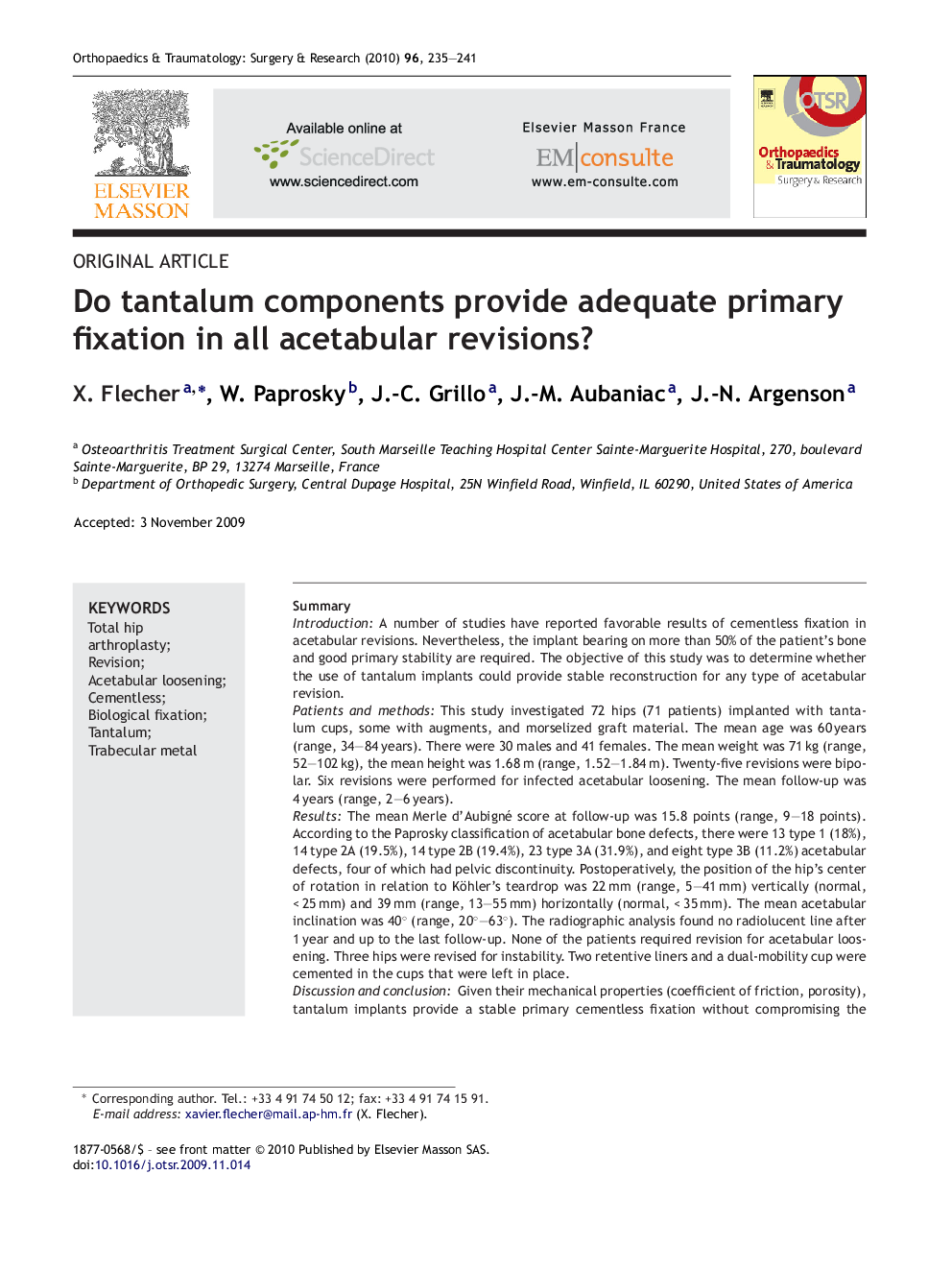| کد مقاله | کد نشریه | سال انتشار | مقاله انگلیسی | نسخه تمام متن |
|---|---|---|---|---|
| 4082449 | 1267639 | 2010 | 7 صفحه PDF | دانلود رایگان |

SummaryIntroductionA number of studies have reported favorable results of cementless fixation in acetabular revisions. Nevertheless, the implant bearing on more than 50% of the patient's bone and good primary stability are required. The objective of this study was to determine whether the use of tantalum implants could provide stable reconstruction for any type of acetabular revision.Patients and methodsThis study investigated 72 hips (71 patients) implanted with tantalum cups, some with augments, and morselized graft material. The mean age was 60 years (range, 34–84 years). There were 30 males and 41 females. The mean weight was 71 kg (range, 52–102 kg), the mean height was 1.68 m (range, 1.52–1.84 m). Twenty-five revisions were bipolar. Six revisions were performed for infected acetabular loosening. The mean follow-up was 4 years (range, 2–6 years).ResultsThe mean Merle d’Aubigné score at follow-up was 15.8 points (range, 9–18 points). According to the Paprosky classification of acetabular bone defects, there were 13 type 1 (18%), 14 type 2A (19.5%), 14 type 2B (19.4%), 23 type 3A (31.9%), and eight type 3B (11.2%) acetabular defects, four of which had pelvic discontinuity. Postoperatively, the position of the hip's center of rotation in relation to Köhler's teardrop was 22 mm (range, 5–41 mm) vertically (normal, < 25 mm) and 39 mm (range, 13–55 mm) horizontally (normal, < 35 mm). The mean acetabular inclination was 40° (range, 20°–63°). The radiographic analysis found no radiolucent line after 1 year and up to the last follow-up. None of the patients required revision for acetabular loosening. Three hips were revised for instability. Two retentive liners and a dual-mobility cup were cemented in the cups that were left in place.Discussion and conclusionGiven their mechanical properties (coefficient of friction, porosity), tantalum implants provide a stable primary cementless fixation without compromising the center of rotation and without necessarily requiring a structural graft. A single implant range can therefore be used for any type and severity of bone loss and for all types of acetabular reconstruction. Longer follow-up is nevertheless necessary to confirm these encouraging results.Level of evidenceLevel IV, historical series.
Journal: Orthopaedics & Traumatology: Surgery & Research - Volume 96, Issue 3, May 2010, Pages 235–241